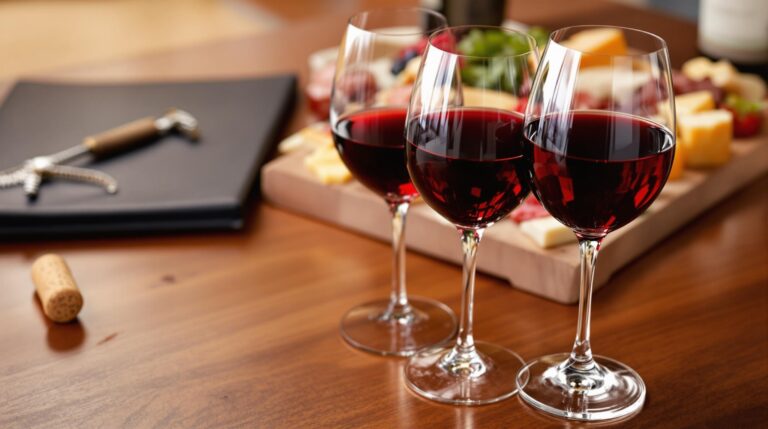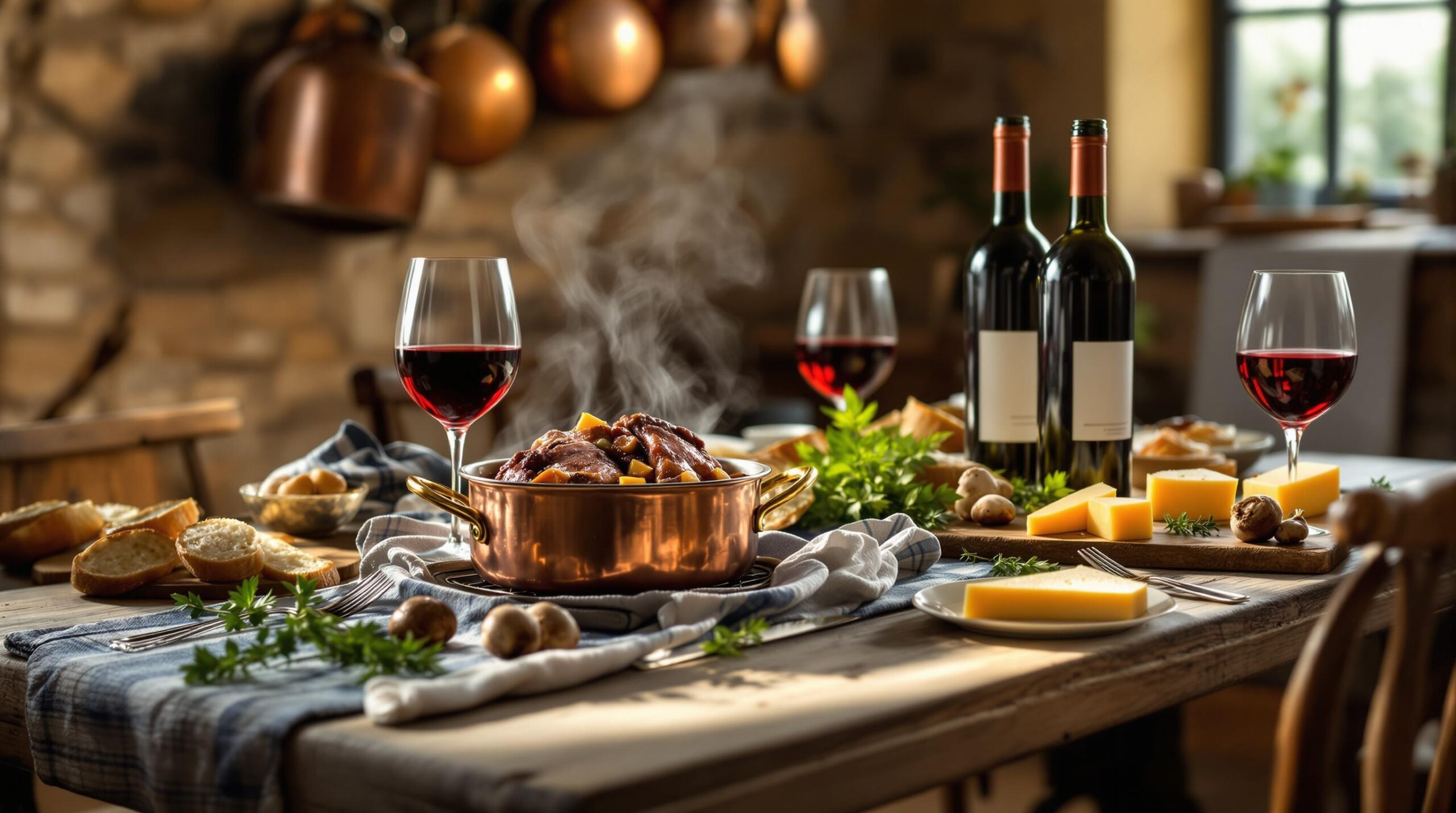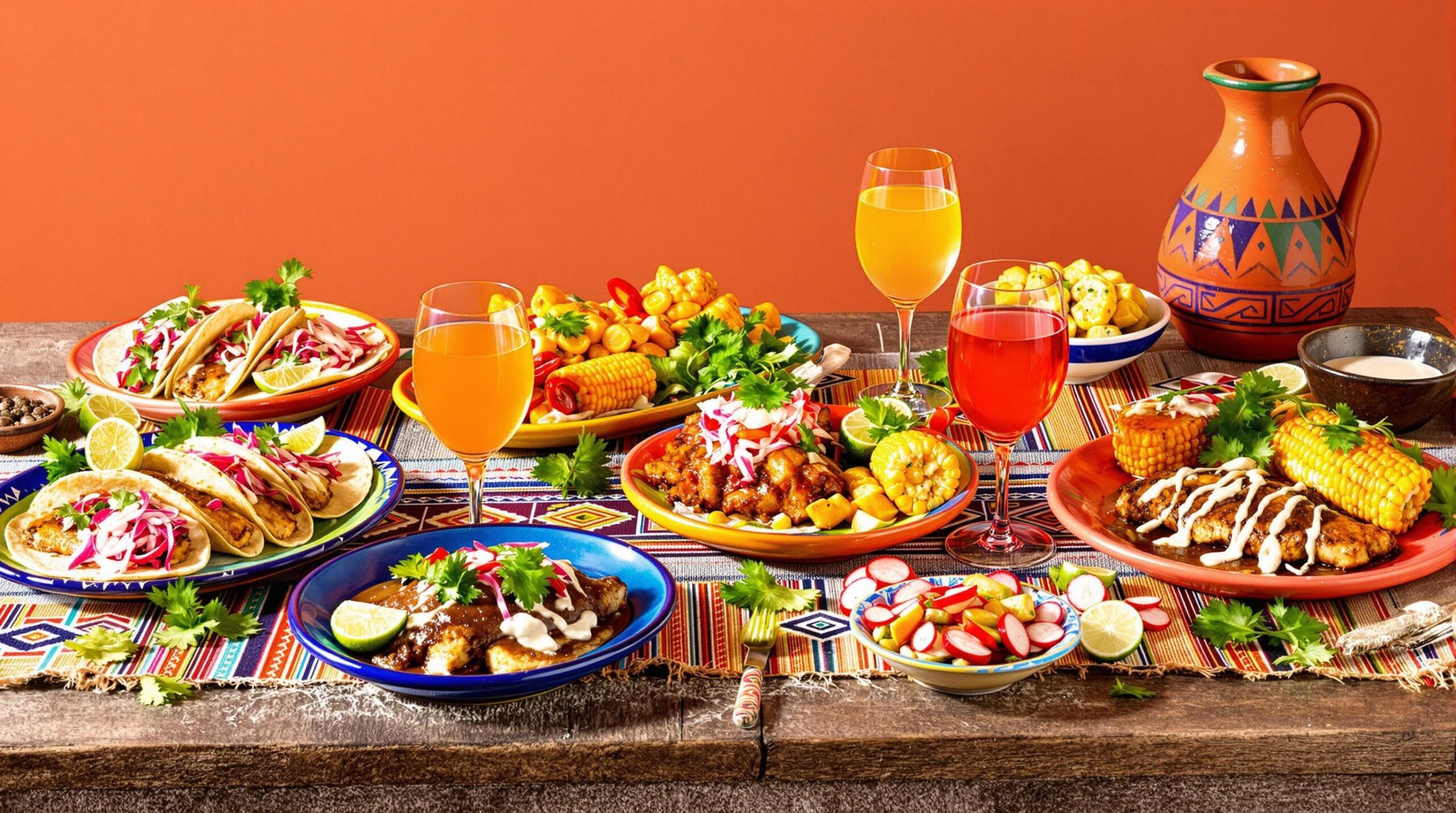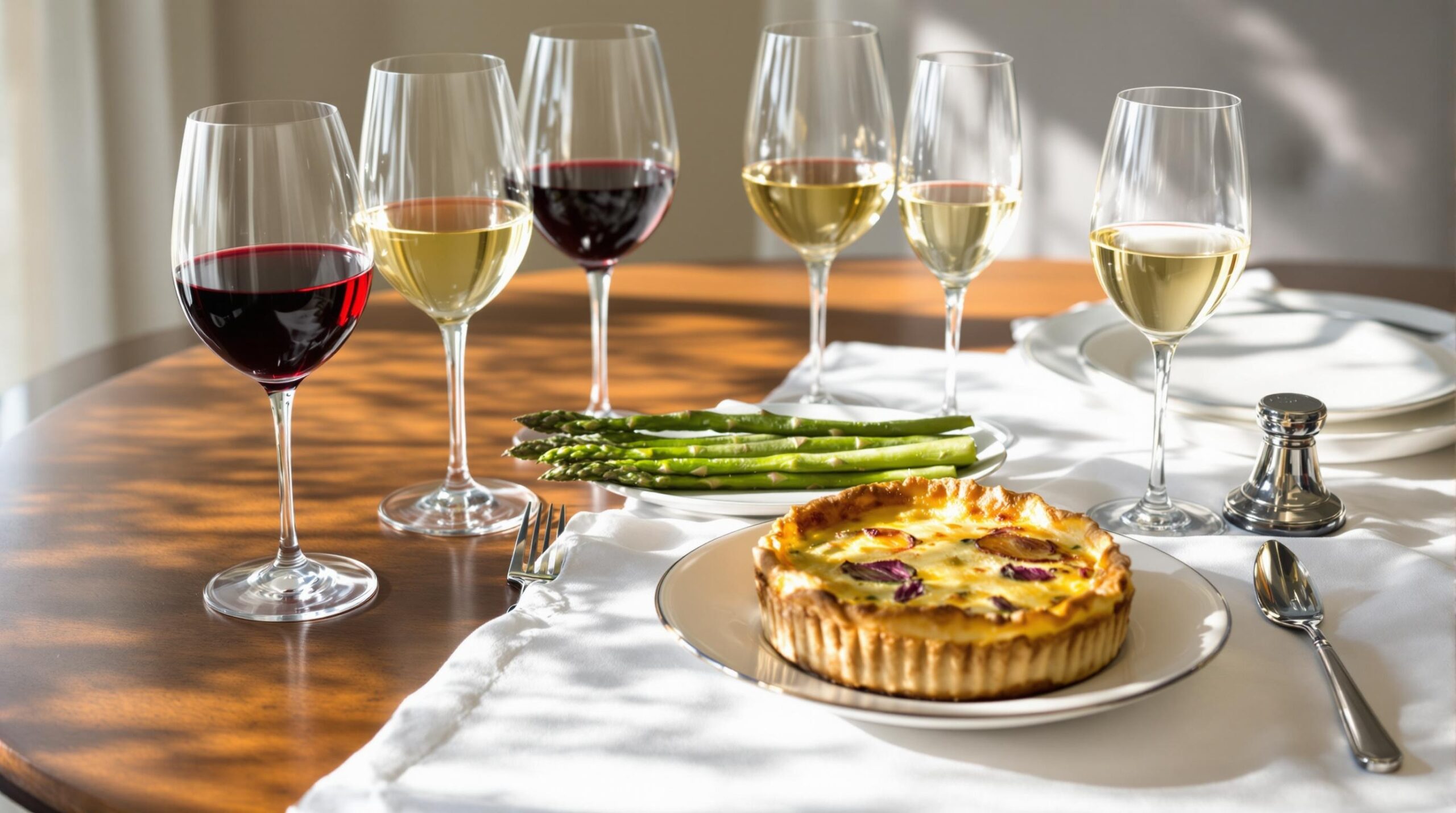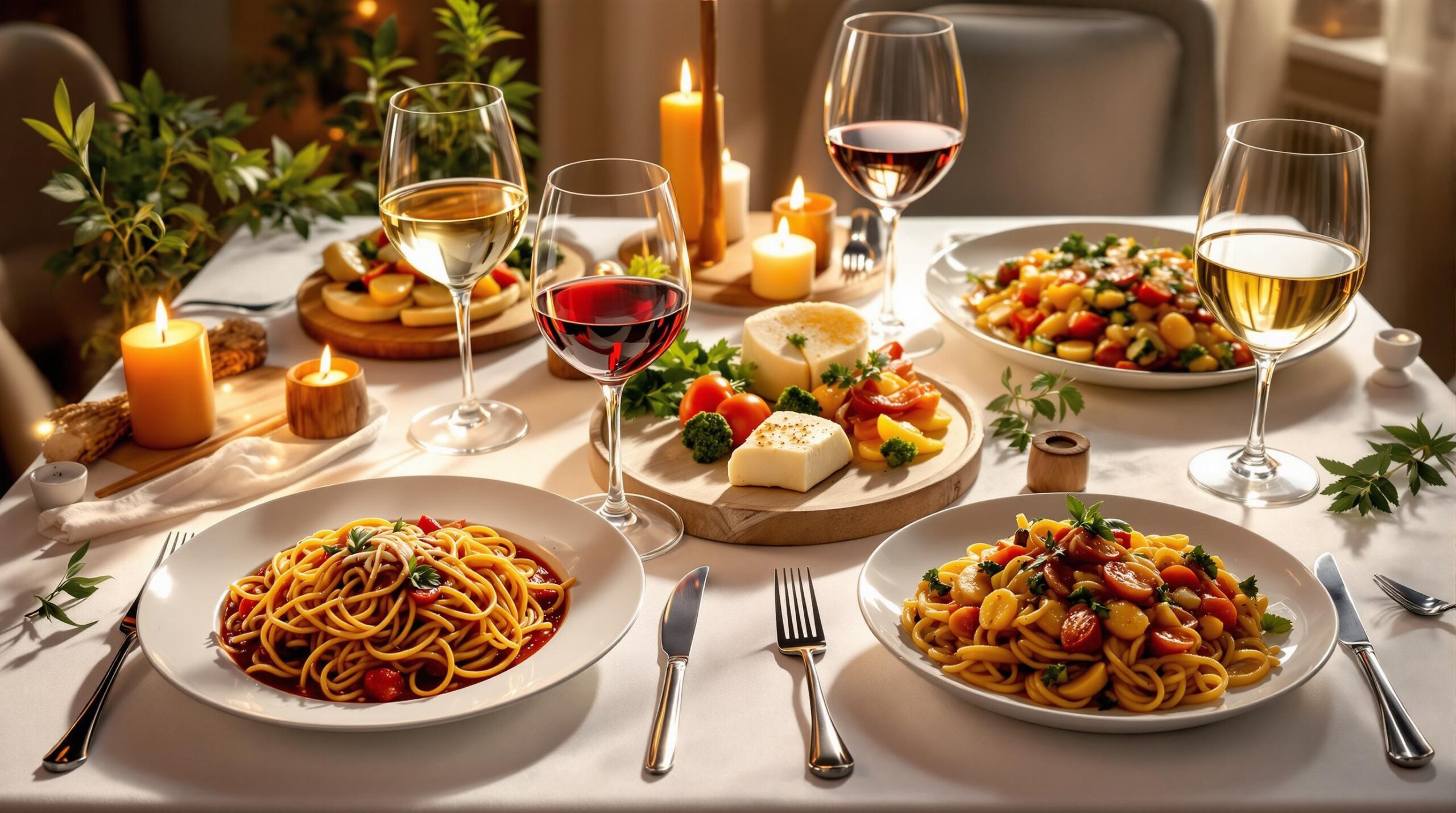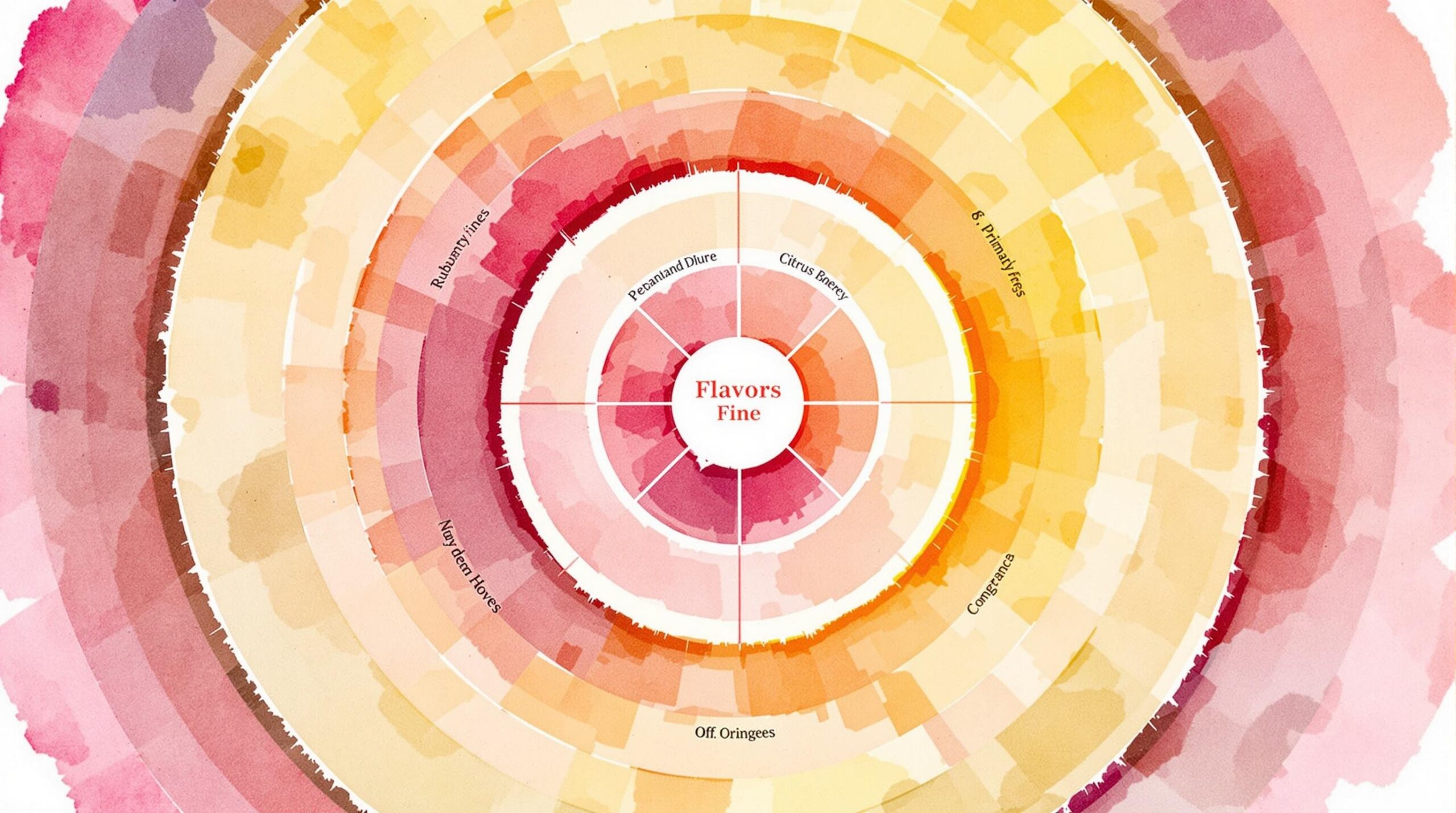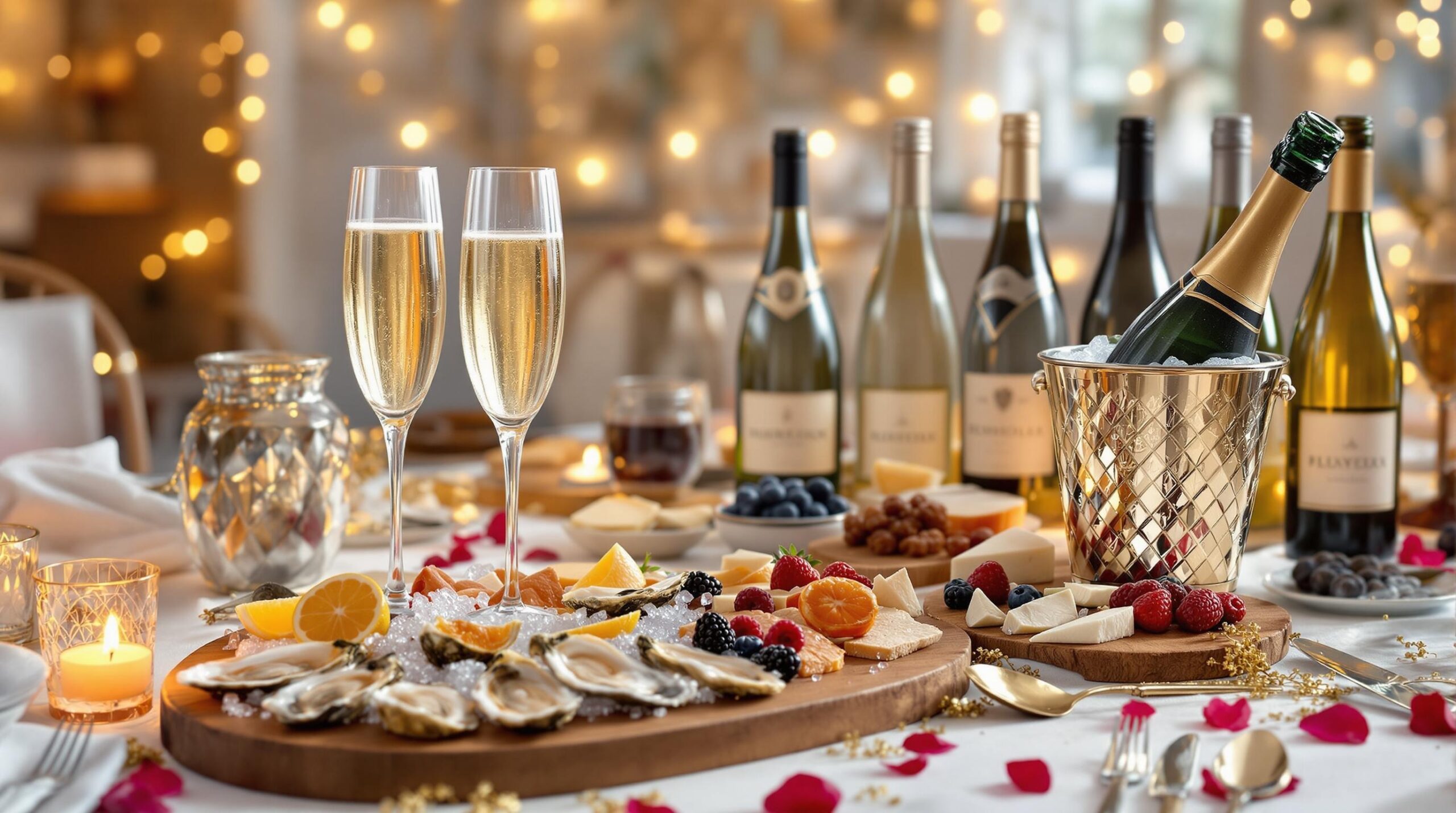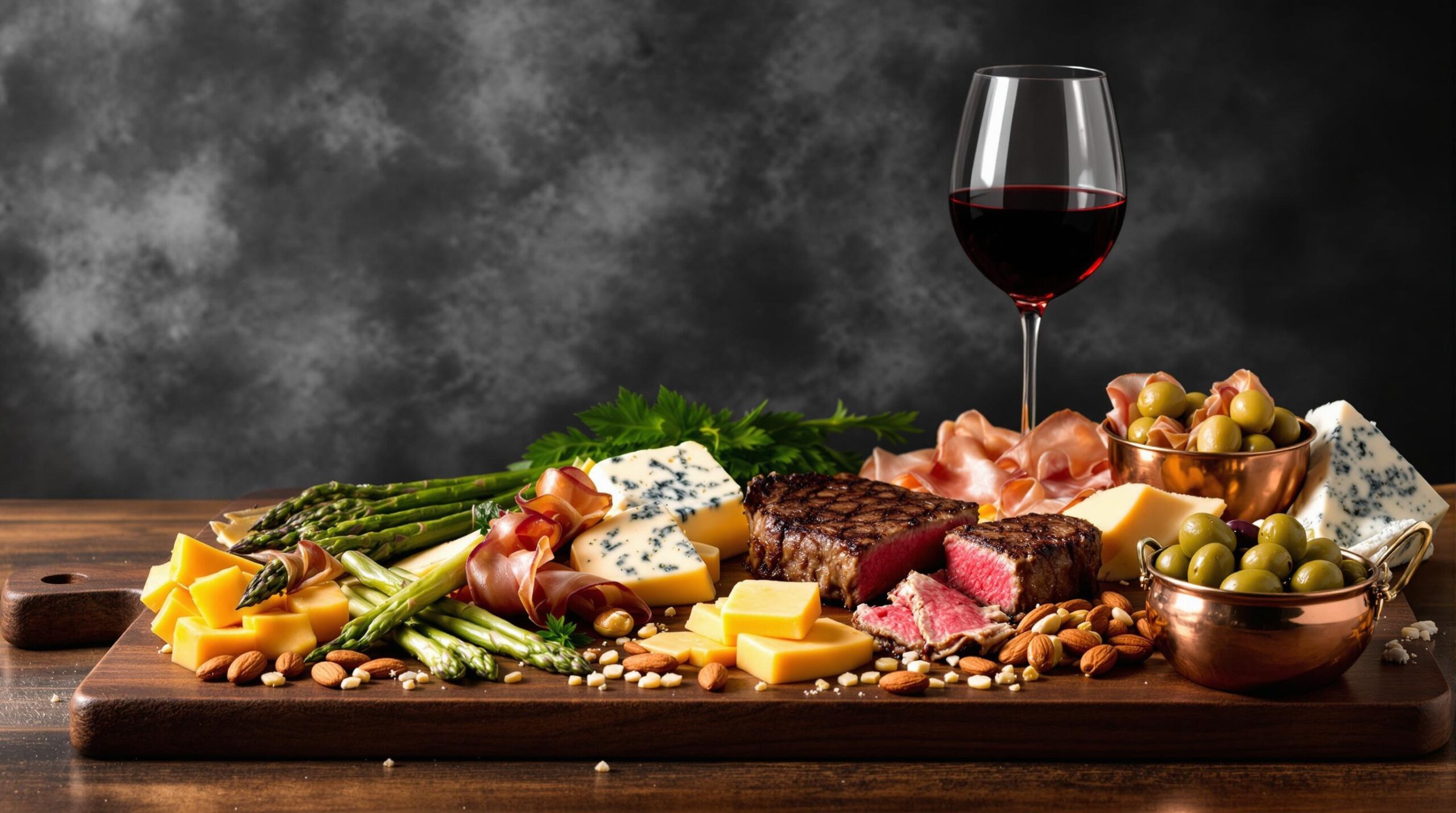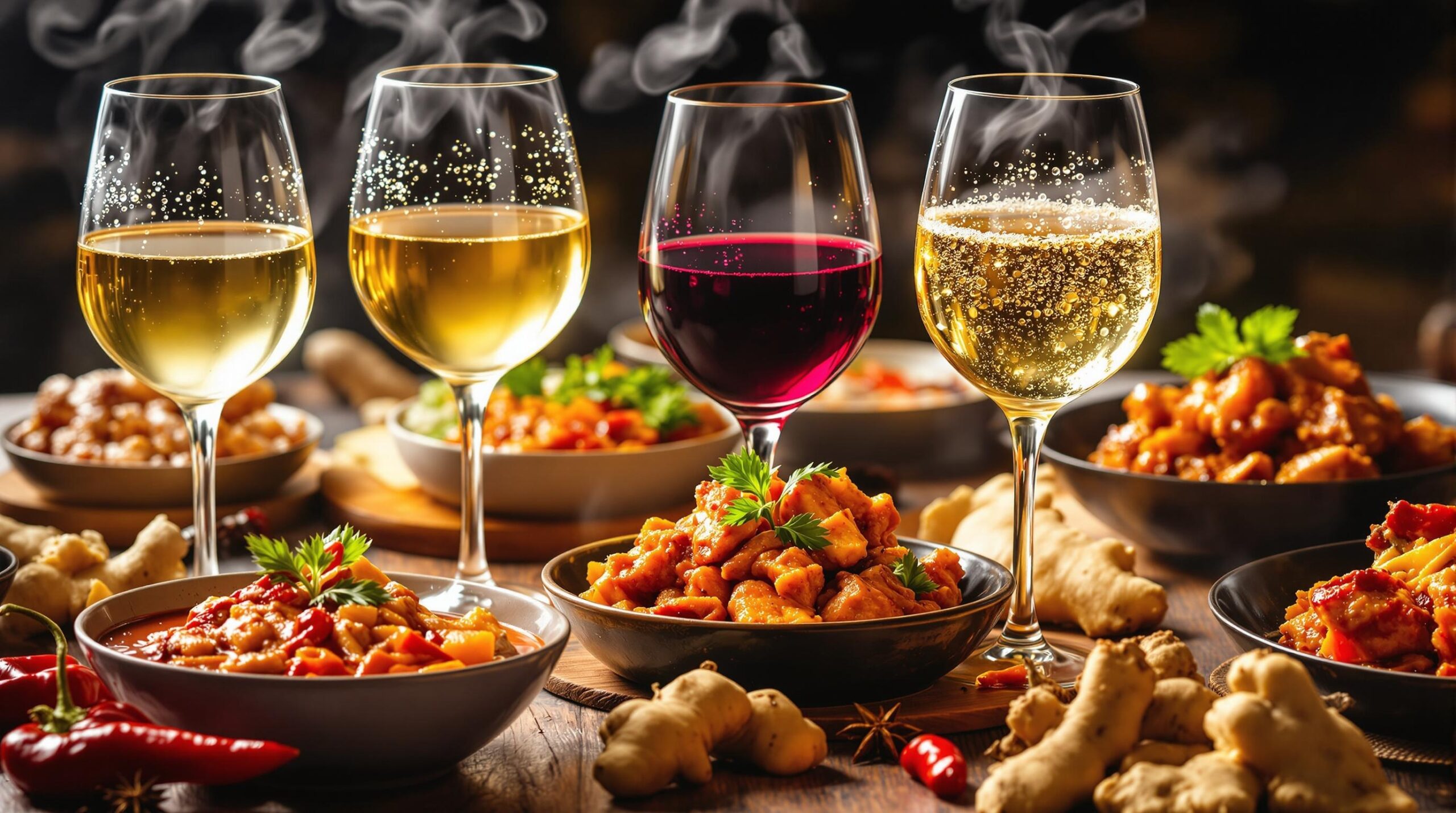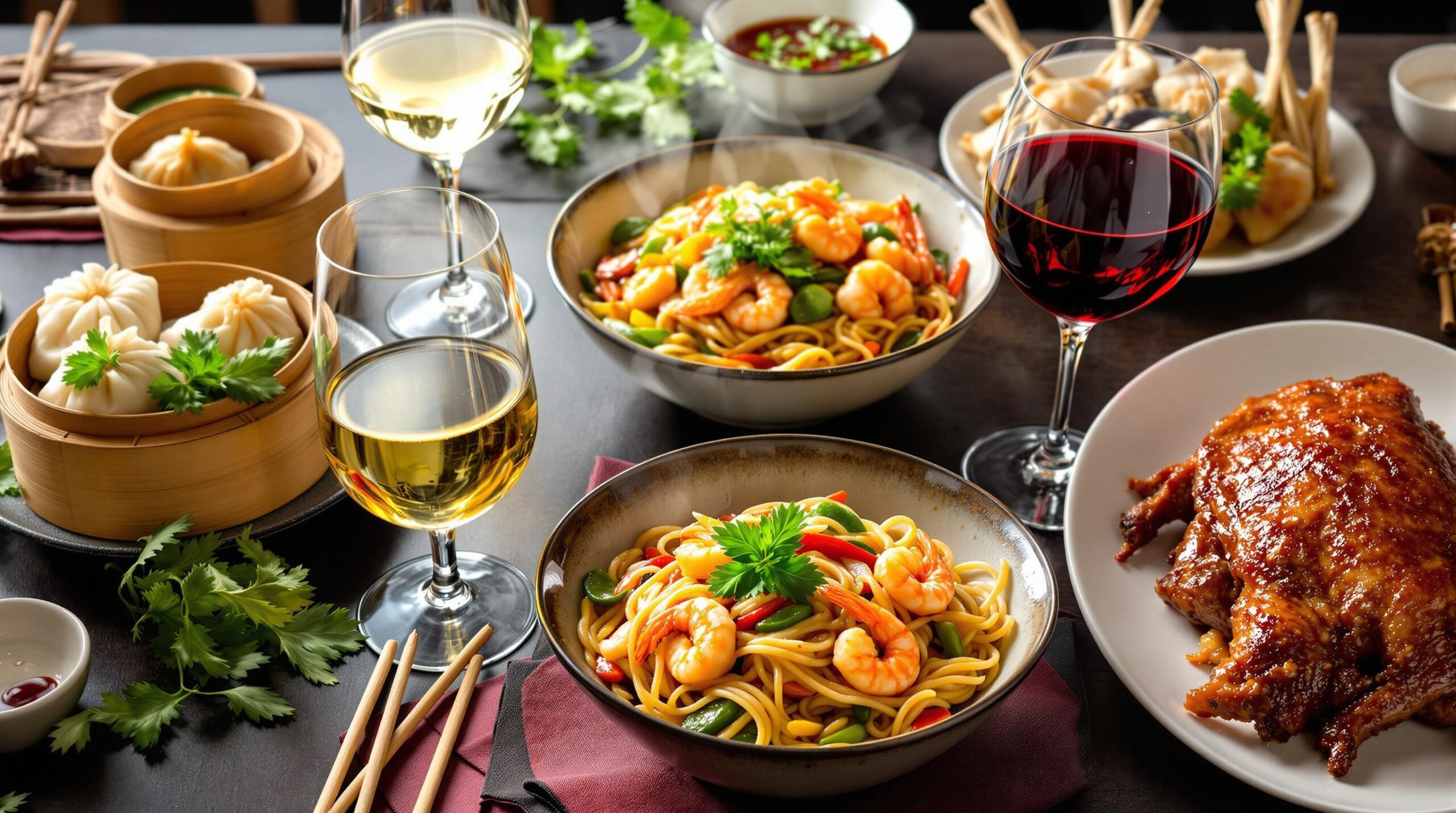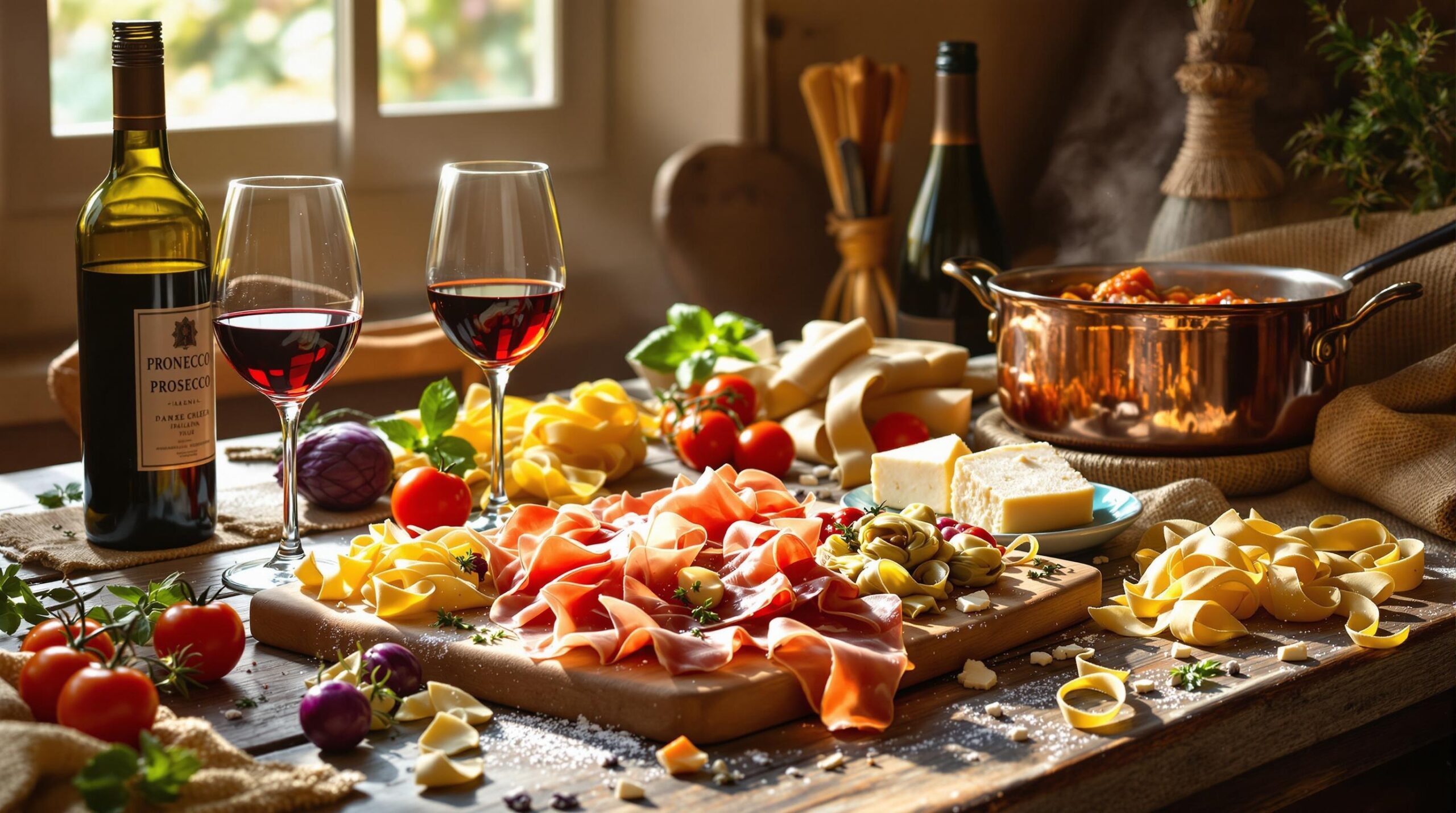Red wine brings warmth, depth, and sophistication to any dining experience. This quick guide helps you navigate popular red wine styles and their ideal food matches.
Understanding Red Wine Characteristics
Tannins, acidity, and body form the foundation of red wine’s personality. These elements work together to create distinct flavor profiles and food-pairing possibilities.
- Light-bodied: Pinot Noir, Gamay
- Medium-bodied: Merlot, Sangiovese
- Full-bodied: Cabernet Sauvignon, Syrah
Popular Red Wine Varieties and Their Profiles
| Wine | Flavor Notes | Best Serving Temp |
|---|---|---|
| Cabernet Sauvignon | Black cherry, cedar, vanilla | 60-65°F |
| Pinot Noir | Raspberry, strawberry, earth | 55-60°F |
| Merlot | Plum, chocolate, herbs | 60-65°F |
Food Pairing Fundamentals
Match intensity with intensity when pairing red wines with food. Consider both the weight and flavor intensity of your dish.
- Light reds: Pair with poultry, mild cheeses
- Medium reds: Match with pork, pasta dishes
- Full-bodied reds: Perfect with red meat, aged cheeses
Remember that tannin levels in red wine pair well with proteins and fats, making them excellent matches for meat dishes.
Regional Red Wine Expressions
Different wine regions produce unique expressions of red wine varieties based on their climate, soil, and winemaking traditions.
- Old World Regions: Bordeaux, Burgundy, Tuscany, Rioja
- New World Regions: Napa Valley, Barossa Valley, Mendoza
- Cool vs. Warm Climate: Affects ripeness, alcohol levels, and flavor intensity
Temperature and Service Tips
Proper serving temperature enhances red wine’s aroma and flavor profile.
| Wine Style | Temperature Range | Decanting Time |
|---|---|---|
| Light Reds | 55-60°F | 15-30 minutes |
| Medium Reds | 60-65°F | 30-60 minutes |
| Full-Bodied Reds | 65-68°F | 1-2 hours |
Storage and Preservation
Proper storage conditions maintain wine quality and prevent spoilage.
- Temperature: Keep consistent at 55°F
- Humidity: Maintain 70-75%
- Light exposure: Store in dark conditions
- Position: Store bottles horizontally
- Opened bottles: Use vacuum sealer, consume within 3-5 days
Making Smart Red Wine Choices
Select red wines that match your taste preferences and occasion.
- Entry-Level Options: Chilean Cabernet, Argentine Malbec
- Mid-Range Choices: Côtes du Rhône, Chianti Classico
- Special Occasion: Barolo, Bordeaux Grand Cru
Consider both price point and drinking window when building your red wine collection.
Note: This outline portion includes sections 5-8, focusing on practical aspects of red wine selection, service, and storage, maintaining a clear and informative tone while avoiding common AI writing pitfalls.
Red Wine FAQs: Selection, Serving & Food Pairing
Common Questions About Red Wine
Q: What’s the best serving temperature for red wine?
A: Serve red wines between 60-65°F (15-18°C). Light reds like Pinot Noir can be served slightly cooler at 55°F (13°C).
Q: How long does red wine last after opening?
A: Most red wines stay fresh for 3-5 days when stored properly with a wine stopper in the refrigerator.
Q: Which red wines are best for beginners?
A: Start with smoother, fruit-forward wines like Merlot, Pinot Noir, or Grenache. These wines typically have softer tannins and balanced flavors.
Q: What foods pair well with red wine?
A: Match wine intensity with food intensity. Pair bold Cabernet Sauvignon with red meats, Pinot Noir with poultry or mushrooms, and Merlot with pasta dishes.
Q: Should I decant red wine?
A: Decant young, tannic wines (like Cabernet Sauvignon) for 1-2 hours. Older wines may need just 30 minutes to remove sediment.
Q: What causes headaches from red wine?
A: Sulfites, tannins, and histamines can trigger headaches. Try organic wines or those labeled “low sulfite” if you’re sensitive.
Q: How do I store red wine at home?
A: Store bottles horizontally in a cool (55°F/13°C), dark place away from vibrations and temperature fluctuations.
Q: Which red wines offer the best value?
A: Look for wines from emerging regions like Spain’s Rioja, Portugal’s Douro Valley, or Argentina’s Malbec.
Q: What glass shape is best for red wine?
A: Use glasses with wider bowls for full-bodied reds and narrower bowls for lighter reds to control aroma concentration.
Q: How can I tell if red wine has gone bad?
A: Check for vinegar-like smells, brownish color, or fizzy texture. Good wine should smell fresh and fruity.
Quick Tips for Red Wine Enjoyment
- Let red wine breathe for 15-30 minutes before serving
- Hold wine glasses by the stem to prevent warming
- Store opened bottles upright in the fridge
- Fill glasses only 1/3 full to allow space for swirling
- Start with lighter reds before moving to fuller-bodied wines
Common Red Wine Varieties and Their Characteristics
| Wine Type | Body | Key Flavors |
|---|---|---|
| Pinot Noir | Light | Cherry, raspberry, earth |
| Merlot | Medium | Plum, chocolate, herbs |
| Cabernet Sauvignon | Full | Blackcurrant, cedar, tobacco |
| Syrah/Shiraz | Full | Black pepper, blackberry, smoke |

